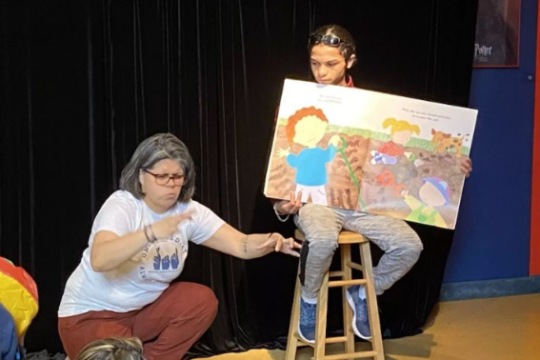
Keith Cagle
Department Chair
Keith Cagle
Department Chair
Select Scholarship
Currently Teaching
In the News
-
April 15, 2024
![a woman is shown signing for a student on a stage who is sitting on a stool and holding an open book for display.]()
Deaf Day of Play at Strong Museum fostered community engagement
WXXI talks to Keith Cagle, department chair, NTID Department of ASL and Interpreting Education, about the hands-on experience the event offered.
-
July 7, 2023
![Four people sit around an office desk having a conversation using American Sign Language.]()
RIT’s National Technical Institute for the Deaf offers five certificate programs in American Sign Language interpreting
To enhance the skills of interpreters in the field, NTID is now offering five certificate programs in American Sign Language specialties.
-
April 15, 2021
![hands using sign language.]()
Advances in Deaf Education
Inside Higher Ed interviews Miriam Lerner, interpreter; Keith Cagle, chair, Department of ASL and Interpreting Education; students Marshall Hurst and Zee Chuan; and Kristi Love, interpreter and director, Randleman Program, about technical and discipline-specific sign language and the important role of interpreters of color.







